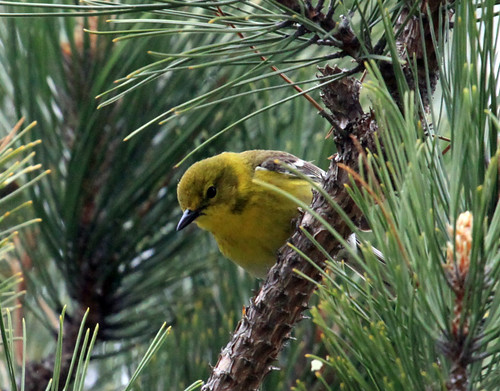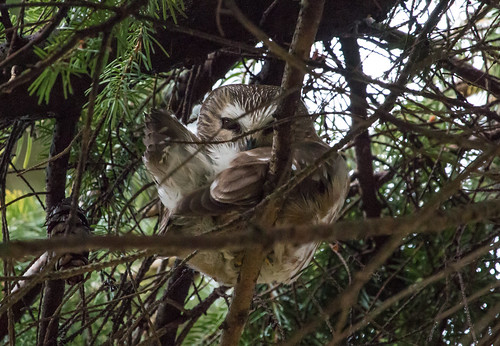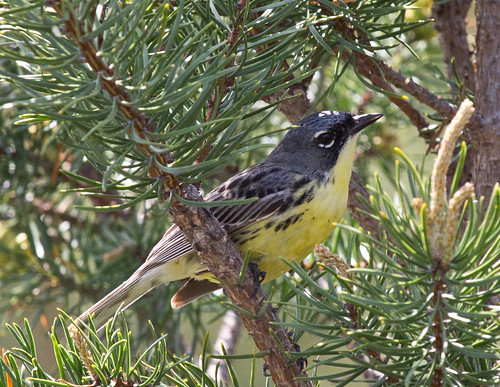When I started putting together my book, 100 Plants to Feed the Birds, the title was written in stone—Storey Publishing intended it to be third in a series that already included 100 Plants to Feed the Bees and 100 Plants to Feed the Monarchs, but it never occurred to me to limit myself to plants that produce seeds, nuts, fruits, nectar, or other vegetal matter that birds eat directly. Most of the birds who do feed on those items also eat a lot of insects that plants support, and birds also use plants for nesting, roosting, and hiding out in; for nest-building fibers; and more.
I knew I’d start with trees, which are the critical component in various ways for birds associated with every forested habitat and even for many grassland species. I broke trees down into two categories—conifers and broadleaf trees. Some people call those two categories “evergreens” and “deciduous trees,” but some conifers, such as the tamaracks in my neck of the woods, turn colors in autumn and then lose their needles until spring. Up here, broadleaf trees are pretty much all deciduous, losing their leaves in winter, but live oaks keep their leaves year-round, the old leaves staying green until new leaves replace them each spring.
Conifers are woody plants that produce their seeds in cones; they may grow as shrubs as well as trees. Some of our most familiar backyard birds, from chickadees and nuthatches to many finches, are experts at pulling seeds out of cones. Few birds eat conifer needles—breaking down cell walls to extract the nourishment within involves a more specialized digestive system than most birds have, but a few species, such as Spruce Grouse, do eat needles, especially in winter and early spring, until insects and other more easily digestible foods become available again.
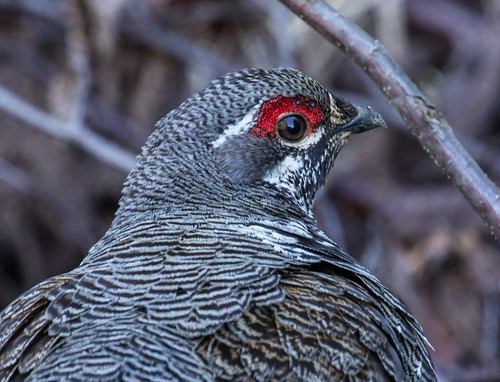 |
| Adult male Spruce Grouse |
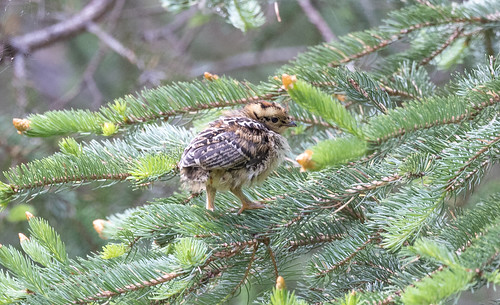 |
| Spruce Grouse chick in a spruce |
Many conifers ooze droplets of sap from the tips of needles, buds, and branches, attracting insects; birds may feed on either or both the fluid and the insects. Native conifers also harbor a wealth of insects within the foliage and cones, providing even more food for native birds. The diversity of warblers in northern forests is due to the diversity of trees—most warblers specialize on gleaning for insects or flycatching from particular areas within specific kinds of trees, and several warblers are especially drawn to conifers.
Conifers have enormous value far beyond providing food, because their dense branches provide shelter for many birds. Many of the owls I’ve photographed were roosting within a conifer, and cardinals, juncos, and a great many other birds spend their winter nights within the sheltering branches of conifers.
When planting to help birds, I recommend not just native American species but species and cultivars that are locally native. Those are the ones that grow best in local conditions, minimizing the need for watering and fertilizers, and the ones most resistant to local insect damage while supporting the local insect species our birds depend on. Starting in the 1600s, when homesick Europeans brought to America many of the European plants they missed, right up through today, when gardeners still plant many non-natives, exotic plants made inroads and started taking over huge swaths of what would otherwise be natural habitat. Some exotic plants don’t compete excessively with native plants, but some have become extremely invasive, out-competing native plants. And bringing in those plants from faraway places also unintentionally brought in many harmful pests, from emerald ash borer and other harmful insects to chestnut blight and Dutch elm disease.
Exotic plants don’t support many of the insects that native plants do, but some aren’t huge ecological problems. As important as it is to plant locally native vegetation as we create backyard habitat, we can safely ignore some exotic plants that are already established. For example, here in northern Minnesota, Norway spruces are an exotic that were planted in many urban environments. I don't recommend starting new Norway spruces in our yards, but they haven’t become naturalized in wilder settings so we don't need to chop them down.
 |
| Great Horned Owl trying to hide from local crows in a Norway spruce |
But oddly, even some locally native conifers cause serious problems. In scrub habitat such as what Black-capped Vireos and Golden-cheeked Warblers require, fire suppression has led to junipers taking over, crowding out the many other essential plants these birds also require. Providing quality habitat in these areas may require burning or otherwise getting rid of some of the junipers to ensure a more well-rounded habitat.
So understanding local issues goes way beyond simple lists of good and bad plants. The more we understand about our local areas, the more inviting we can make our yard for the wildlife that belongs in our neighborhoods.



